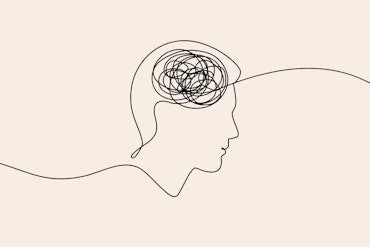New 3D-printed brain tissue could change everything
Scientists have created 3D-printed brain tissue that could impact future understanding of conditions such as Alzheimer’s disease.
![<p>Progress is being made by scientists to better understand the brain by utilising new methods for research. [Source: Shuttershock]</p>](https://agedcareguide-assets.imgix.net/news/articles/wp/scientistbrainhand1302.jpg?fm=pjpg&format=auto&w=550&q=65)
Progress is being made by scientists to better understand the brain by utilising new methods for research. [Source: Shuttershock]
Key points
- Brain tissue has been created using 3D-printing technology and is expected to help scientists understand more about how the brain works
- Scientists are hopeful that learning more could provide a better understanding of how the brain changes when affected by different types of neurological and psychiatric disorders
- There are limitations to the model but this creates a foundation for further studies
Functional brain tissue has been created in a new study with results released earlier this month, February 2024. According to researchers, the discovery may have a critical impact on allowing us to better understand the brain and how it changes when affected by different types of disorders, such as Alzheimer’s disease.
Alzheimer’s disease is the most common form of dementia, with up to 70 percent of people with dementia diagnosed with Alzheimer’s disease. In 2022, the Australian Institute of Health and Welfare estimated that over 401,000 Australians were living with some form of dementia, which suggests there may have been over 280,000 Australians affected by Alzheimer’s disease.
Alzheimer’s disease is progressive, meaning that the symptoms of dementia cause deterioration in the affected person’s abilities and behaviours. In Alzheimer’s disease, initial problems are first observed through thinking, memory and reasoning difficulties, and can eventually lead to changes such as confusion and differing behaviours.
The results from this study highlight the beginning of new scientific territory where researchers could possibly determine how the brain works in people with Alzheimer’s disease in the future.
As one of the researchers, who is also a professor of neuroscience at the University of Wisconsin-Madison, Su-Chun Zhang understands how this research could change the future of humans in understanding how our brains work in much more detail than ever before.
“It could change the way we look at stem cell biology, neuroscience, and the pathogenesis of many neurological and psychiatric disorders,” Professor Zhang said.
Supports are essential to help Australians maintain their quality of life with Alzheimer’s disease but using 3D-printed brain tissue could be the next step in ensuring no one falls through the cracks by identifying conditions before symptoms appear.
“In the past, we have often looked at one thing at a time, which means we often miss some critical components. Our brain operates in networks. We want to print brain tissue this way because cells do not operate by themselves,” said Professor Zhang.
While 3D printing is commonly done through vertical layers, a horizontal method was used in the study.
Scientists used a softer ‘bio-ink’ in which to place the brain cells. These brain cells are provided with oxygen and ‘growth media’ to facilitate the 3D-printed brain tissues’ functioning.
Through this, scientists can observe functional brain tissue and neural pathways. Communication between neurons in the brain is the ‘communication’ aspect which is essential for instructing other parts of the body such as muscles to move. By changing the conditions around the brain, scientists can begin to form theories for further research.
The researchers in the study still understand that there are limitations to their model that could be developed in time. However, the progress made provides a strong foundation for further discoveries to be made.
What do you think about 3D-printed brain tissue to further discoveries about Alzheimer’s disease?
Let the team at Talking Disability know and subscribe to the newsletter for weekly news, information and industry updates.
Relevant content:
The album that stimulates dementia and Alzheimer’s disease
The complex cause of anxiety disorders in men
How does ageing affect the ability to remember?























